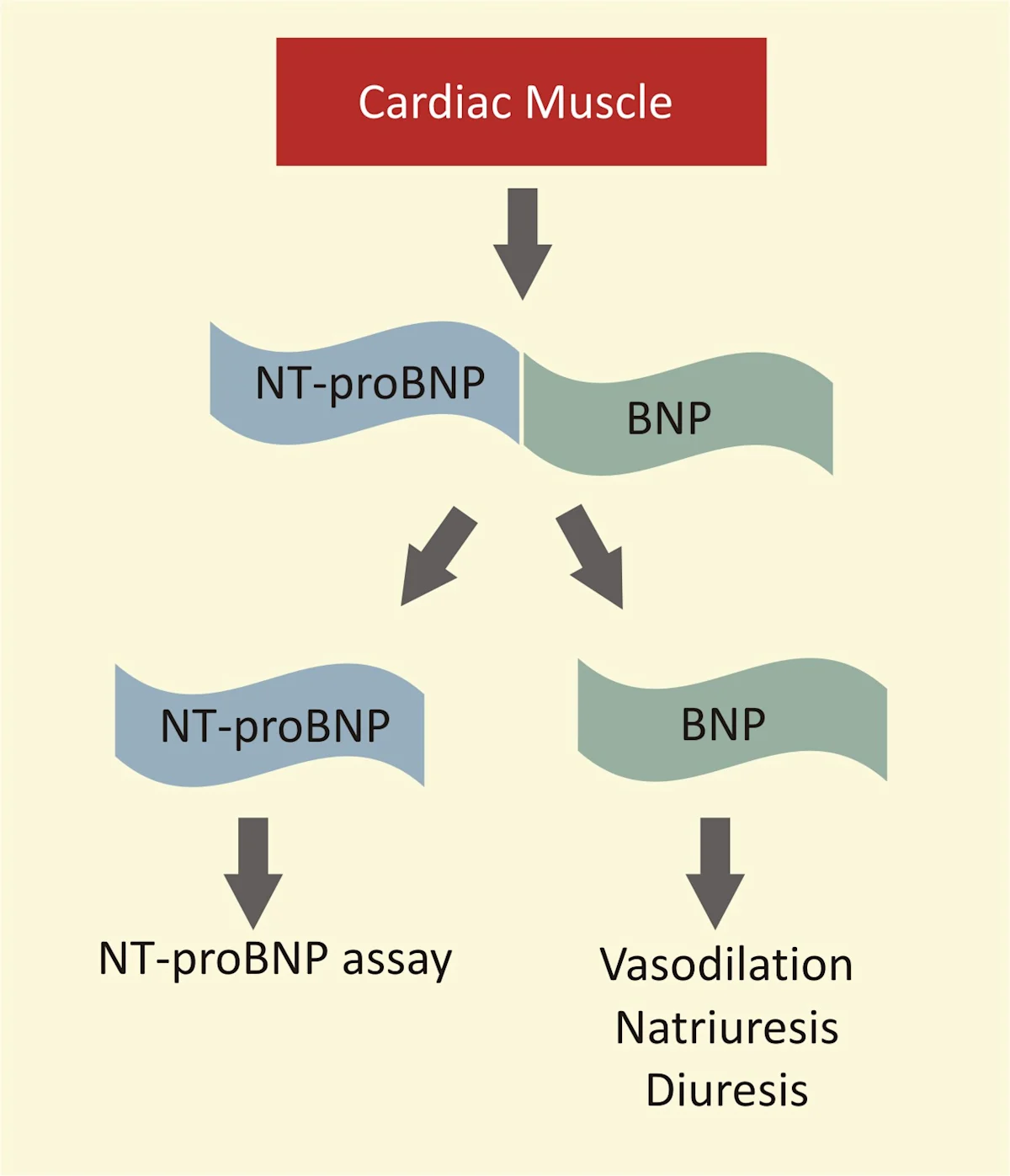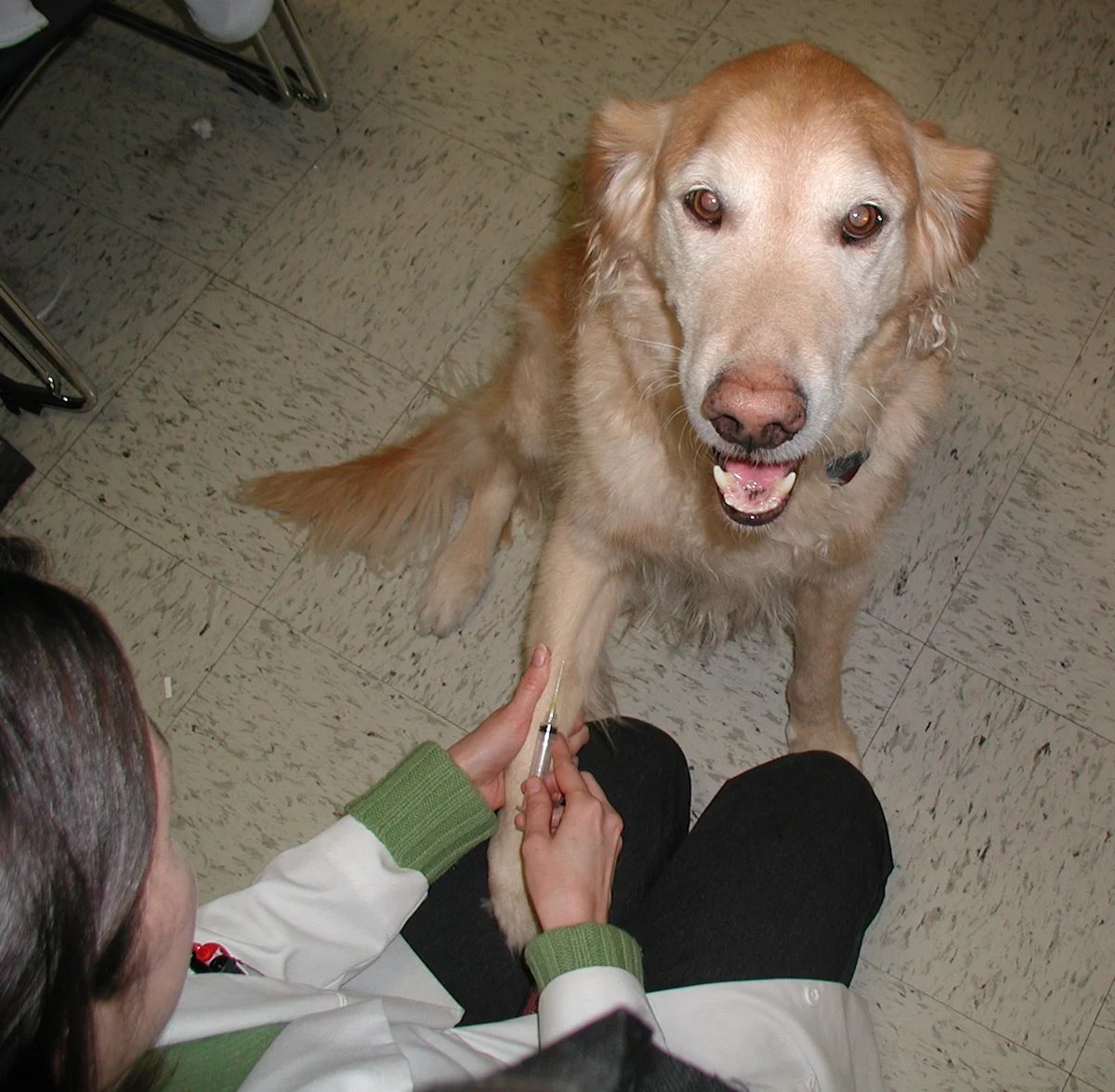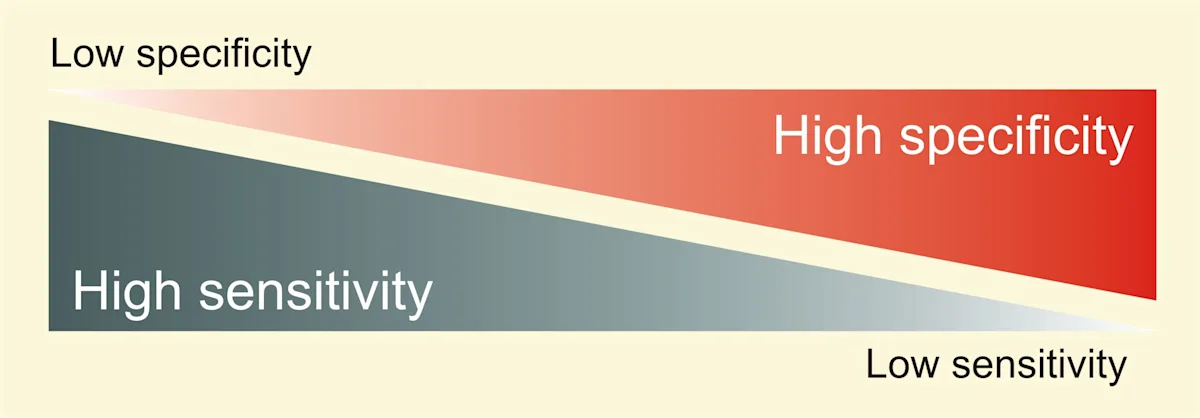Cardiac N-Terminal Pro–B-Type Natriuretic Peptide Assay
Mark A. Oyama, DVM, DACVIM (Cardiology), University of Pennsylvania
Gretchen E. Singletary, DVM, University of Pennsylvania

Courtesy Idexx
The assessment of cardiac disease in dogs and cats can be a challenging task.
Diagnostic techniques such as electrocardiography, radiography, and echocardiography are relatively expensive, time-consuming, and in the case of cardiac ultrasound, require specialized equipment and expertise. Cardiac N-terminal pro–B-type natriuretic peptide (NT-proBNP) is a blood-based assay that can assist practitioners in detection of underlying heart disease and differentiation of cardiac versus noncardiac etiology of respiratory signs.
The physiology of NT-proBNP is intriguing. In addition to its pump function, the heart is also an endocrine organ, and natriuretic peptides, such as B-type natriuretic peptide (BNP), are secreted by atrial and ventricular myocytes primarily in response to dilation or stretch.1,2 Cardiac NT-proBNP is a byproduct of BNP production (Figure 1). The biologic actions of BNP are counter to those of the renin-angiotensin-aldosterone system. That is, BNP elicits vasodilation, natriuresis, and diuresis.

Schematic of NT-proBNP secretion and release. Note that the biologically active hormone is actually BNP, and NT-proBNP is a byproduct of its formation. Due to NT-proBNP’s greater stability in circulation, the diagnostic assay tests for the NTproBNP molecule as opposed to BNP itself. This method is valid because NT-proBNP is produced in a 1:1 fashion with BNP.
Cardiac disease, including degenerative mitral valve disease, dilated cardiomyopathy, and hypertrophic cardiomyopathy, is associated with elevated production of BNP and, therefore, elevated formation of NT-proBNP.3-8 NT-proBNP is more stable in circulation than BNP and can be detected using standard ELISA-based technology. NT-proBNP is formed in a 1:1 ratio with BNP and can be used to help detect heart disease and determine etiology of respiratory signs in both dogs and cats.3-11
Diagnostic Indications
The differentiation of congestive heart failure from primary respiratory disease in animals that present with respiratory signs, such as coughing, wheezing, increased respiratory effort, or emergent respiratory distress, can be challenging. NT-proBNP is released in response to myocardial stretch and consequently is typically elevated in animals with congestive heart failure. As a result, markedly elevated NT-proBNP at time of presentation may help alert practitioners to a high likelihood of heart failure (as opposed to primary respiratory disease) as the cause of clinical signs.
Heart Disease in Cats
The most common acquired heart diseases in cats are hypertrophic and restrictive cardiomyopathy. These diseases present a unique diagnostic challenge because many cats with significant disease have no clinical signs for long periods of time. Moreover, physical examination findings (including heart murmurs and gallops), which are suggestive of underlying disease, can be difficult to detect in many animals.
Cats with plasma levels of NT-proBNP < 100 pmol/L are unlikely to be affected by clinically significant heart disease. In patients with mild elevations of plasma NT-proBNP levels (100 –270 pmol/L), further diagnostics, such as echocardiography, are recommended if the clinical suspicion of heart disease is high. Plasma NT-proBNP levels > 270 pmol/L indicate a high likelihood of underlying heart disease; further workup is recommended.
False-positives and false-negatives can occur and results of NT-proBNP assays should be interpreted in conjunction with history, physical examination findings, and other diagnostic tests. Most important, NT-proBNP testing reflects current heart function, and a single normal result does not preclude the possibility of disease development at a future date. Therefore, NT-proBNP testing is not recommended as a screening tool in young cats of breeding age.
Heart Disease in Dogs
Dogs with degenerative mitral valve disease or dilated cardiomyopathy generally have elevated plasma NT-proBNP levels. It is important to note that in older, small-breed dogs with no clinical signs, the diagnosis of mitral valve disease is easily made by auscultation.
The severity of heart disease as assessed by clinical signs and heart size is moderately correlated to the degree of NT-proBNP elevation. Dogs with plasma NT-proBNP levels < 900 pmol/L are very unlikely to be affected by clinically significant heart disease. If a dog has mildly elevated concentrations of plasma NT-proBNP levels (900–1800 pmol/L) and the clinical presentation is suspicious for heart disease, further workup, including thoracic radiographs or echocardiography, is recommended. Plasma NT-proBNP levels > 1800 pmol/L are severely elevated and the likelihood of heart failure is high if clinical signs are present.
False-positives and false-negatives can occur and results of NT-proBNP assays should be interpreted in conjunction with history, physical examination findings, and other diagnostic tests. Current diagnostic recommendations for dogs and cats are summarized in the Table.

Prognostic Indications
An intriguing use of NT-proBNP assay involves assessment of morbidity and mortality risk in dogs with mitral valve disease. A recent study reported that dogs with higher NT-proBNP values had a greater risk of death due to cardiac causes than dogs with lower values.12 This finding, along with those of others,13 suggests that NT-proBNP assay may identify subpopulations of dogs that would benefit from closer monitoring or more aggressive therapy. Future clinical trials should help clarify the role of NT-proBNP in identifying risk and guiding therapy in dogs with mitral valve disease.
Advantages
The advantages of blood-based testing for disease are self-evident. The ease, rapidity, cost, widespread availability, and objective results are highly attractive (Figure 2). NT-proBNP assay appears to provide objective and prognostic data that is independent of conventional testing.

By virtue of its blood-based characteristics, NT-proBNP assay is relatively affordable and easy to perform.
Disadvantages
As with any diagnostic test, the results of NT-proBNP assays should not be interpreted in isolation. This assay should be used in conjunction with signalment, history, physical examination findings, and, if indicated, other diagnostic tests, such as radiography, echocardiography, electrocardiography, blood pressure measurement, serum biochemistry, and thyroid assay. It is important to note that concurrent renal disease or prerenal azotemia causes elevations in NT-proBNP in both dogs and cats; in these instances values should be interpreted cautiously.
The clinical value of a diagnostic test is framed by a competing balance between sensitivity and specificity (Figure 3). While a completely dichotomous test (one that definitively says either “yes” or “no”) would be the most desirous, NT-proBNP, like many other blood-based assays, produces a continuum of results, including normal, moderately elevated, and severely elevated values. Both false-positive and false-negative results can exist, especially in animals with relatively mild disease7,14 or animals with concurrent heart and respiratory ailments.9-11
Currently, the NT-proBNP assay is only available as a “send-out” assay and reporting of results requires approximately 24 hrs. This limits the utility of the assay in the emergent patient where rapid clinical decision making and treatment is desired.

The clinical value of a diagnostic test is a balance between sensitivity and specificity. The challenge is to find assays that maximize each of these parameters.
Economic Impact
Blood-based assays are generally much less expensive than other diagnostic tests, such as thoracic radiography and echocardiography.
Clinicians may find that performing a NT-proBNP assay improves confidence and owner compliance when deciding if more expensive diagnostics should or should not be pursued.
The NT-proBNP assay represents a new paradigm for the assessment of cardiac disease in veterinary medicine, and as such, clinicians should realize that additional data are needed to completely understand the role of cardiac blood-based testing. A variety of studies addressing many important issues are underway.